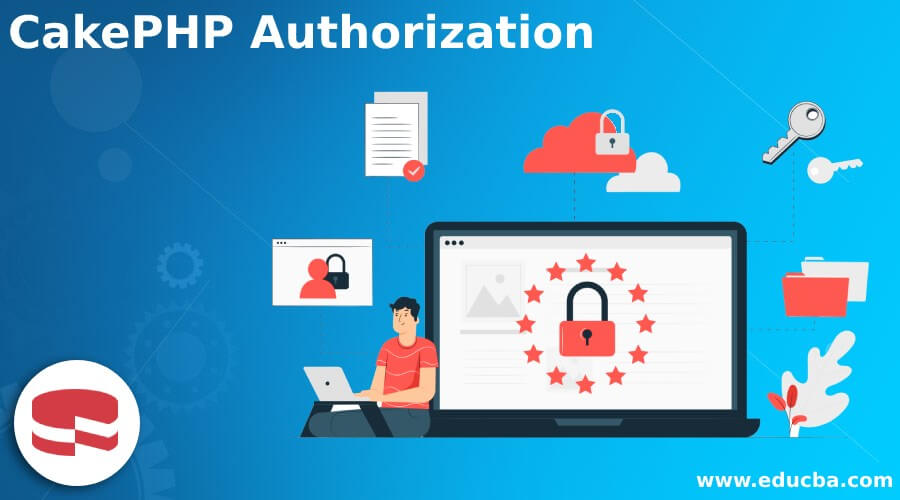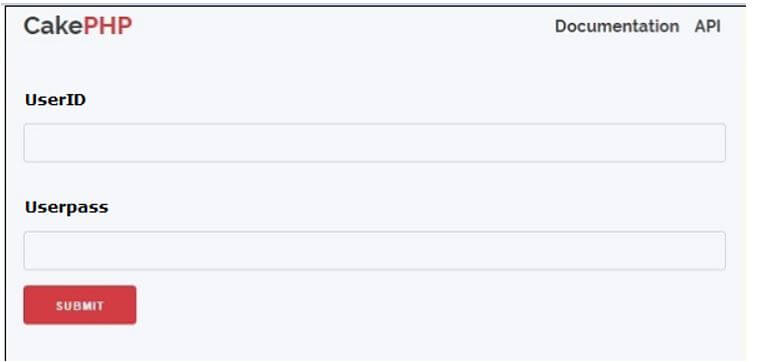Updated February 18, 2023

Introduction to CakePHP Authorization
The following article provides an outline for CakePHP Authorization. CakePHP is an open-source tool that provides an Auth component in a pluggable manner to perform our task. The Auth component is used to provide the authentication and authorization objects. In other words, we can say that it is a combination of both used to determine the authorization and authentication of users as per our requirement. Authentication means determining the user credentials and verifying those credentials, such as username and password. On the other end, authorization means verification of the user based on the user credentials and other information the user provides.
What is CakePHP Authorization?
As you might know, two new modules “as of late” (not so as of late) are added to manage the ideas of Authentication and Authorization in your CakePHP applications. Throughout the long term, authentication and authorization were overseen in the Controller layer using AuthComponent. These two things normally fill in intricacy as your task develops, making the AuthComponent a perplexing class managing many elements simultaneously.
One of the first thoughts behind these new modules was to refactor AuthComponent and make explicit layers to deal with:
Confirmation: Who are you?
Approval: Would you say you are permitted?
We will investigate the Authorization ideas in this article utilizing a particular model: We should envision some game applications where Users will oversee Tournaments. The Users will want to make new Tournaments and join the Tournaments through Tournament Membership with numerous affiliations. Clients will not approach the Tournaments except if they are welcome to play. Players of a Tournament can welcome different Users to play.
How to Check CakePHP Authorization?
Now let’s see how we can check CakePHP authorization as follows:
After implementing Authorization Middleware to our respective applications, we can check authorization. This is because middleware wraps the identity of every request.
Now let’s see how we can check authorization with the single resource as follows:
They can strategy empowers you actually to take a look at approval on a solitary asset. Normally this is an ORM substance or application area object.
Your Policies give rationale to settle on the approval choice:
Code:
// Fetch identity from each and every request
$user = $this->request->getAttribute('identity');
// Checking authorization on $sample
if ($user->can('delete', $sample)) {
// Do delete operation
}Now let’s see how we can apply the scope conditions as follows:
Whenever you want approval checks for an assortment of items like a paginated inquiry, you will regularly need to get records that the current client approaches. This module carries out this idea as ‘scopes.’
Scope approaches permit you to ‘scope’ an inquiry or result set and return the refreshed rundown or question object:
Code:
// Fetch the identity from each and every request
$specified user = $this->request->getAttribute('identity');
$Sql_query = $specified fuser->ApplyScopeTo('index', $Sql_query);The Authorization Component can be utilized in regulator activities to smooth out approval, which raises exemption on disappointment.
Create CakePHP Authorization
Now let’s see how we can create authorization in CakePHP with an example as follows:
First, we need to understand what parameters we need to consider as follows:
Confirmation is the most common way of distinguishing the right client. CakePHP upholds three kinds of validation.
- FormAuthenticate: It permits you to confirm clients given structured POST information. Typically, this is a login structure that clients enter data into. This is the default validation strategy.
- BasicAuthenticate: It permits you to confirm clients are utilizing Basic HTTP validation.
- DigestAuthenticate: It permits you to confirm clients are utilizing Digest HTTP validation.
First, we need to configure the routes.php file as follows:
Code:
<?php
use Cake\Core\Plugin;
use Cake\Routing\RouteBuilder;
use Cake\Routing\Router;
Router::defaultRouteClass('DRoute');
Router::scope('/', function (RouteBuilder $routes) {
$routes->connect('/auth',['controller'=>'Auth','action'=>'index']);
$routes->connect('/login',['controller'=>'Auth','action'=>'login']);
$routes->connect('/logout',['controller'=>'Auth','action'=>'logout']);
$routes->fallbacks('DRoute');
});
Plugin::routes();After that, we need to create a controller.php file and write the following code as follows:
Code:
<?php
namespace App\Controller;
use Cake\Controller\Controller;
use Cake\Event\Event;
use Cake\Controller\Component\AuthComponent;
class DemoController extends Controller {
public function initialize() {
parent::initialize();
$this->loadComponent('RequestHandler');
$this->loadComponent('Flash');
$this->loadComponent('Auth', [
'authenticate' => [
'Form' => [
'fields' => [
'username' => 'userid',
'password' => 'userpass'
]
]
],
'loginAction' => [
'controller' => 'Authexs',
'action' => 'login'
],
'loginRedirect' => [
'controller' => 'Authexs',
'action' => 'index'
],
'logoutRedirect' => [
'controller' => 'Authexs',
'action' => 'login'
]
]);
}
public function BFilter(Event $eventt) {
$this->Auth->allow(['index','view']);
$this->set('loggedIn', $this->Auth->specified user());
}
}Now create the authcontrollr.php file and write the following code as follows:
Code:
<?php
namespace App\Controller;
use App\Controller\AppController;
use Cake\ORM\TableRegistry;
use Cake\Datasource\ConnectionManager;
use Cake\Event\Eventt;
use Cake\Auth\DefaultPasswordHasher;
class AuthController extends AppController {
var $component = array('Auth');
public function index(){
}
public function login(){
if($this->request->is('post')) {
$specified_user = $this->Auth->identify();
if($user){
$this->Auth->setUser($specified_user);
return $this->redirect($this->Auth->redirectUrl());
} else
$this->Flash->errormsg('Entered username and password is wrong');
}
}
public function logout(){
return $this->redirect($this->Auth->logout());
}
}Finally, we need to create a login template to see the result as follows.
<?php
echo $this->Form->create();
echo $this->Form->control('UserID');
echo $this->Form->control('Userpass');
echo $this->Form->button('Submit');
echo $this->Form->end();
?>Explanation:
Here we create a template to view the results. After executing the above code, we will get the following screen.
Here we can provide user credentials for login.
We must create another PHP file for logout and write the following code.
Code:
<?php
echo $this->Html->link('logout',[
"controller" => "Auth","action" => "logout"
]);
?>After executing the above code, we will get the following screen.
CakePHP Authorization Installing
Now let’s see how we can install authorization in CakePHP as follows:
First, we need to load the plugin by using the following statement as follows:
Code:
$this-> addPlugin('Authorization');After that, we need to enable all authorization plugins by importing the following class as follows:
Code:
use Authorization\AuthorizationService;
use Authorization\AuthorizationServiceInterface;
use Authorization\AuthorizationServiceProviderInterface;
use Authorization\Middleware\AuthorizationMiddleware;
use Authorization\Policy\OrmResolver;After creating a policy as per our requirement, we also need to fix add and edit action as per our requirement. The requirement mentioned above we can achieve through coding.
Conclusion
From the above article, we have taken in the essential idea of the CakePHP authorization and see the representation and example of the CakePHP authorization. Finally, we saw how and when we use the CakePHP authorization from this article.
Recommended Articles
This is a guide to CakePHP Authorization. Here we discuss the introduction, Creation, installation, and how to check CakePHP authorization. You may also have a look at the following articles to learn more –



